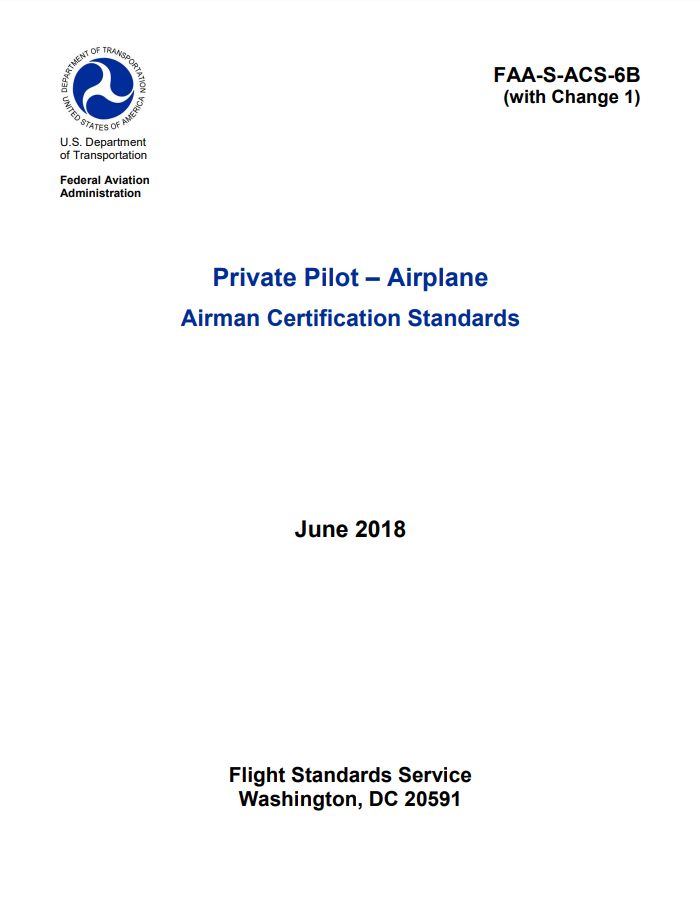Private Pilot (Airman Certification Standards)
$5.95
The Federal Aviation Administration (FAA) has published the Private Pilot – Airplane Airman Certification Standards (ACS) document to communicate the aeronautical knowledge, risk management, and flight proficiency standards for the private pilot certification in the airplane category, single-engine land and sea; and multiengine land and sea classes. This ACS incorporates and supersedes FAA-S-ACS-6A, Private Pilot – Airplane Airman Certification Standards, Change 1.
The Federal Aviation Administration (FAA) has published the Private Pilot – Airplane Airman Certification Standards (ACS) document to communicate the aeronautical knowledge, risk management, and flight proficiency standards for the private pilot certification in the airplane category, single-engine land and sea; and multiengine land and sea classes. This ACS incorporates and supersedes FAA-S-ACS-6A, Private Pilot – Airplane Airman Certification Standards, Change 1.
The FAA views the ACS as the foundation of its transition to a more integrated and systematic approach to airman certification. The ACS is part of the safety management system (SMS) framework that the FAA uses to mitigate risks associated with airman certification training and testing. Specifically, the ACS, associated guidance, and test question components of the airman certification system are constructed around the four functional components of an SMS:
- Safety Policy that defines and describes aeronautical knowledge, flight proficiency, and risk management as integrated components of the airman certification system;
- Safety Risk Management processes through which both internal and external stakeholders identify changes in regulations, safety recommendations, or other factors. These changes are then evaluated to determine whether they require modification of airman testing and training materials;
- Safety Assurance processes to ensure the prompt and appropriate incorporation of changes arising from new regulations and safety recommendations; and
- Safety Promotion in the form of ongoing engagement with both external stakeholders (e.g., the aviation training industry) and FAA policy divisions.

